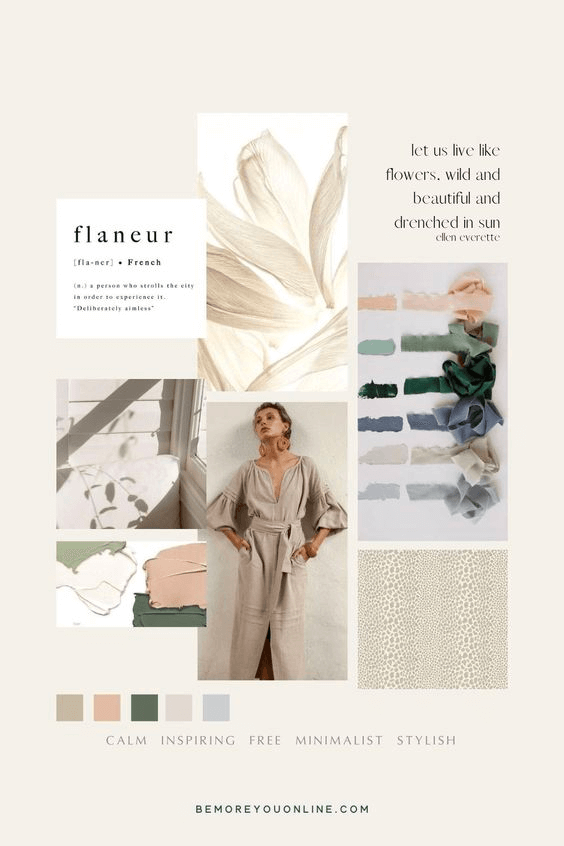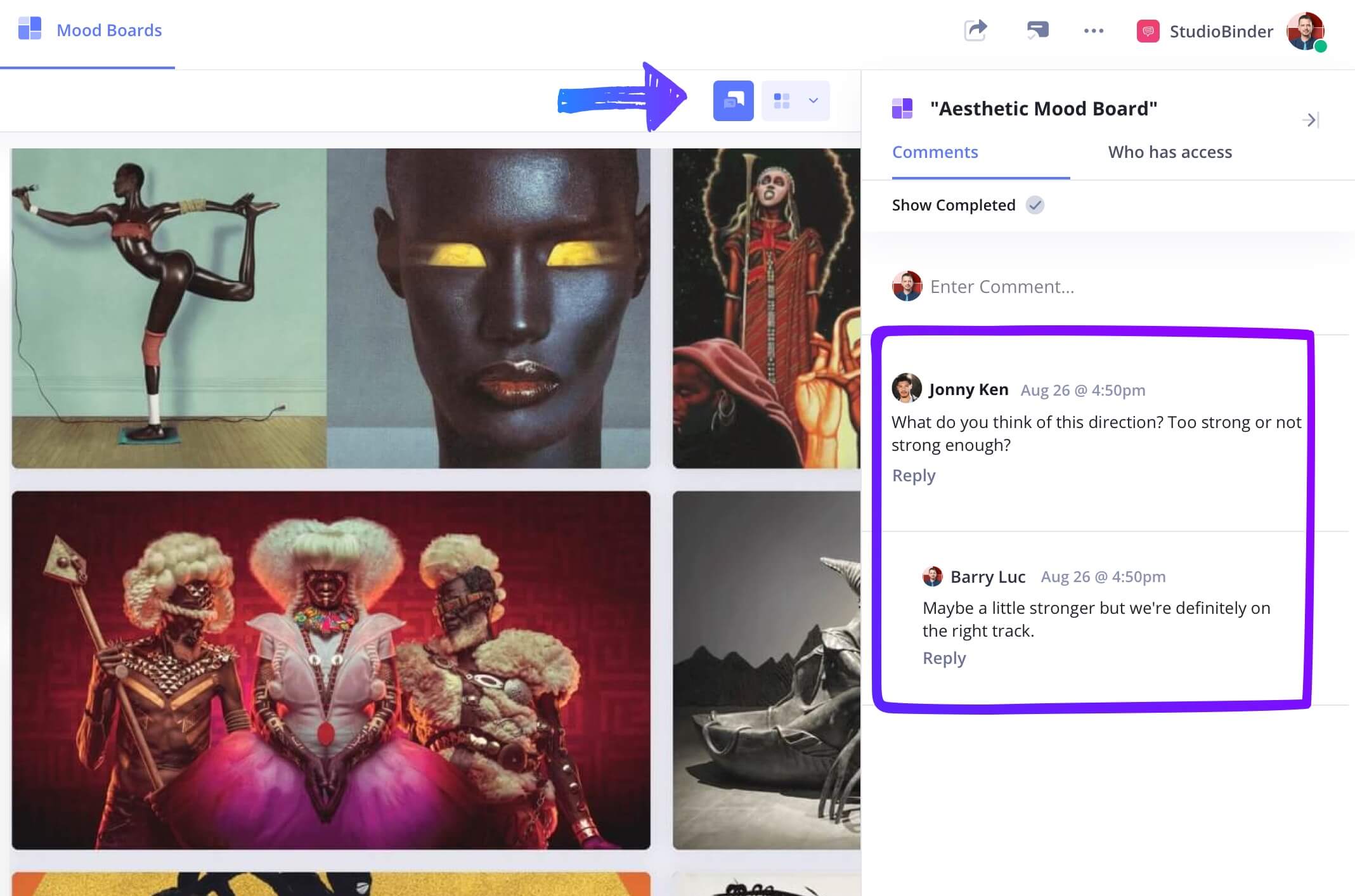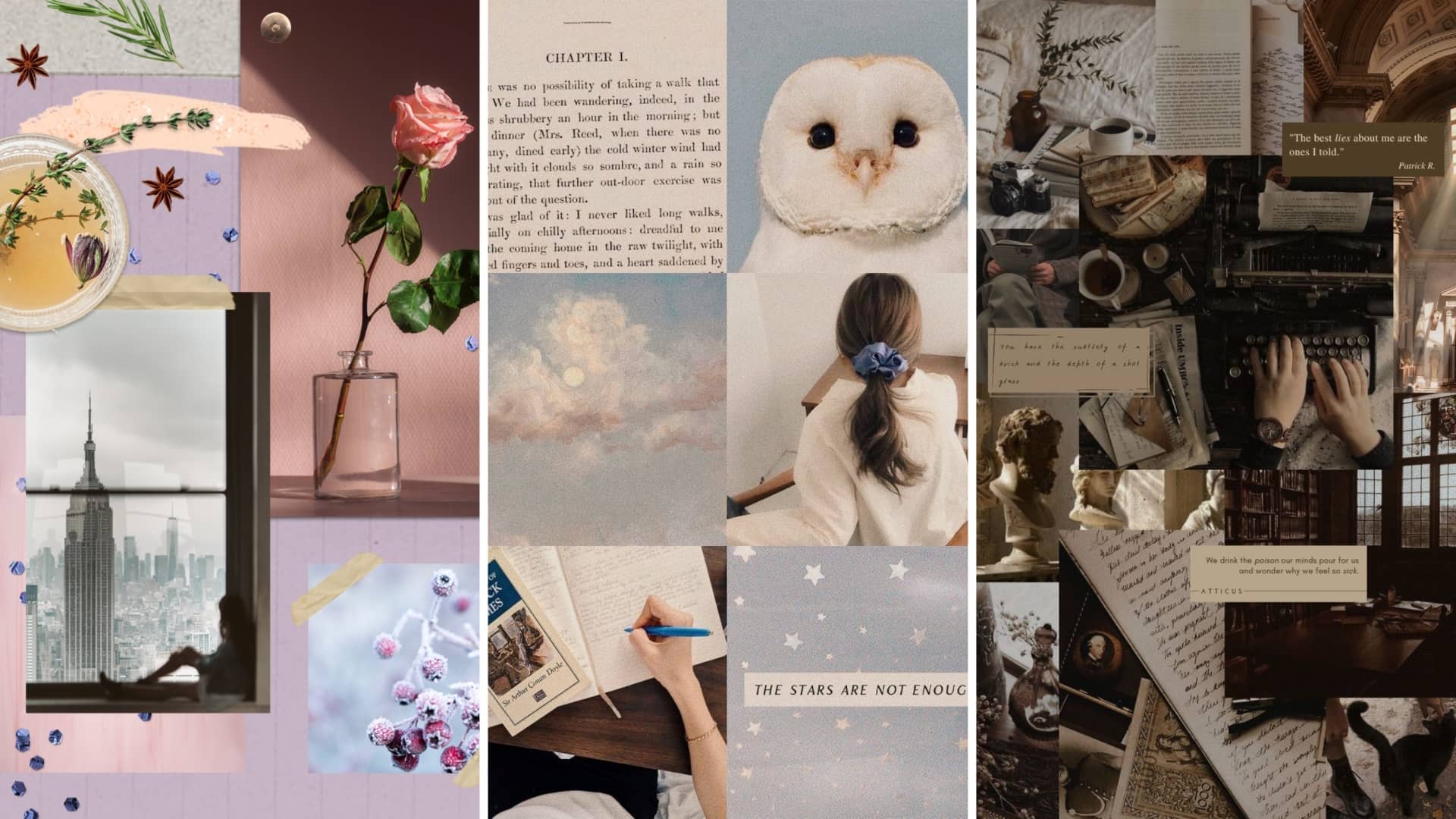If you’re creative, chances are you have heard of “mood boards” and the many ways they can help inspire your next project. They’re great for helping break through creative blocks, getting a better understanding of the style you are trying to achieve, and providing inspiration for new ideas. But what goes into making an aesthetic moodboard, and how can you make your own? Let’s dive in.
Aesthetic Mood Board Examples
Determine your concept
Determine what you want your mood board to represent. Before you start collecting images, it's important to have a clear goal in mind for what you want your board to accomplish.
Is this a photography mood board, an interior design mood board, or a brand mood board? Depending on your needs, choosing the right mood board maker from the start can make the process more intuitive and efficient.

Aesthetic mood board template for branding
Determine what details you want to focus on. Are you wanting to focus on a particular color scheme? A certain type of font or design? Or maybe even create something abstract with no specific theme?
Having clarity around this point will help ensure that you don't get too distracted as you gather visuals for your project.
The first step is to decide on the theme for your mood board. Do you want it to have a summery feel? A vintage vibe? Or something modern and fresh? Perhaps you’re looking for something that’s calming and peaceful?
Choosing your theme will help you narrow down which images and textures to include in your mood board. Reviewing an example of a mood board for a similar project can help you get started with the right visual direction.
Related Posts
Making Aesthetic Mood Boards That Inspire
Collect visuals
Once you have chosen your theme, start collecting visuals that match it. Aesthetic mood boards work best when the visuals are consistent in tone, style, and color palette.
The visuals could be anything from photos of nature, fashion trends, or artworks. Looking at existing mood board examples can also help spark ideas, especially if you’re unsure where to begin. You can even use images from magazines, online blogs, Pinterest, or stock image libraries to quickly build out your board with high-quality visual content.
Try to keep them within the same color palette so they all flow together nicely. Using color swatches at the start can help you define a consistent tone and make quicker decisions about what visuals to include or exclude.
Built-in editing tools can help you adjust brightness, contrast, and saturation to keep your visuals consistent across the board. Using a digital mood board maker can help keep your collection organized and accessible across devices. If you prefer a more hands-on approach, try a flexible mood board creator that allows you to freely arrange elements without a fixed layout.
When collecting elements for your aesthetic moodboard keep in mind the overall look and feel. Consider the colors and elements that will be used to create a cohesive aesthetic, as well as the types of media you plan to use for all design elements.
For example, if you are creating an aesthetic mood board for a fashion project, consider the textures and materials of clothing items.

Fashion mood board example using a template
Once you find something that speaks to you or conveys the message or feeling you want to achieve with your project, save it in one place. Many creators use a mood board maker to centralize their ideas and quickly rearrange visual assets as their concept evolves.
We used StudioBinder’s mood board software to create our aesthetic moodboard example that you can check out below.
This is a strong example of a mood board built with narrative cohesion and visual flow.
Remember, there are no hard rules for creating an aesthetic mood board. They are meant to communicate your creative vision. This means being open to using materials from any medium that might better communicate that vision.
For example, if you are creating an aesthetic moodboard for fashion, do not be afraid to look at mood boards for interior design or filmmaking for inspiration. If you’re looking for more mood board examples, explore our library of project types to find inspiration tailored to your needs.
Related Posts
Aesthetic Moodboard Maker
Assemble the mood board
Once you have collected all of your elements, it’s time to arrange them in a visually appealing way. A good mood board maker lets you experiment with layouts quickly and refine your concept visually.
This can be done by arranging aesthetic elements into grids, creating shapes, or any other design that you feel best represents your project.
Reviewing mood board examples that use grid or freeform layouts can offer guidance on how to structure your board visually. With various pieces, it’s important to consider composition, such as proportion and symmetrical balance. These things will help create a visually pleasing and instantly aesthetic mood board.

Mood board examples with balanced layouts
Experiment with various mood board layouts to find the best composition for your concept. An aesthetic moodboard may differ project to project, so do not be afraid to try new things. A flexible mood board creator gives you the freedom to experiment with shape, spacing, and composition without rigid templates.
Improving Aesthetic Mood Boards
Share and get feedback
Once you’ve finished your board, be sure to export it and share it to get feedback from peers, clients, or collaborators. Getting feedback on your aesthetic moodboard can be a beneficial way to gain creative inspiration, refine your design concept, and ensure your visual elements are communicating the right tone.
Many teams use aesthetic mood boards collaboratively to align on everything from color palettes to overall design direction. Whether you’re working in interior design, fashion, or graphic design, sharing your board early in the design process can surface unexpected insights.
Use tools with drag and drop functionality or an aesthetic mood board maker to update elements quickly as feedback comes in. The goal is to refine your board into a high-quality, cohesive vision that everyone can get behind. A mood board creator with real-time collaboration features can be especially helpful for teams refining a visual strategy together.

Mood board examples with balanced layouts
Aesthetic Mood Board Template
Create mood boards with a template
If you’re looking for more free mood board templates, look no further.
No matter what creative project you're working on, we have mood board templates for photography, film, branded content, and more. These templates are used by professional designers to kickstart visual direction and maintain cohesion across creative teams.
See the entire collection in our complete template library, where you'll also find different templates for shot lists, storyboards, and AV scripts to continue your project to the next phase.
Related Posts
Up Next
Create your own mood board
Looking to expand your design ideas beyond fashion? A common use for aesthetic moodboards is interior design, where lighting, materials, and color palettes bring a space to life. Whether you’re crafting a clothing line or planning a living room makeover, the principles are the same: moodboards help you visualize and organize your creative vision.
Ready to start building? Explore StudioBinder’s Mood Board Creator—an intuitive tool for creating moodboards for fashion, interior design, photography, and more.
Up Next: StudioBinder's Mood Board Creator →
Share your vision with elegant shot lists and storyboards.
Create robust and customizable shot lists. Upload images to make storyboards and slideshows.

